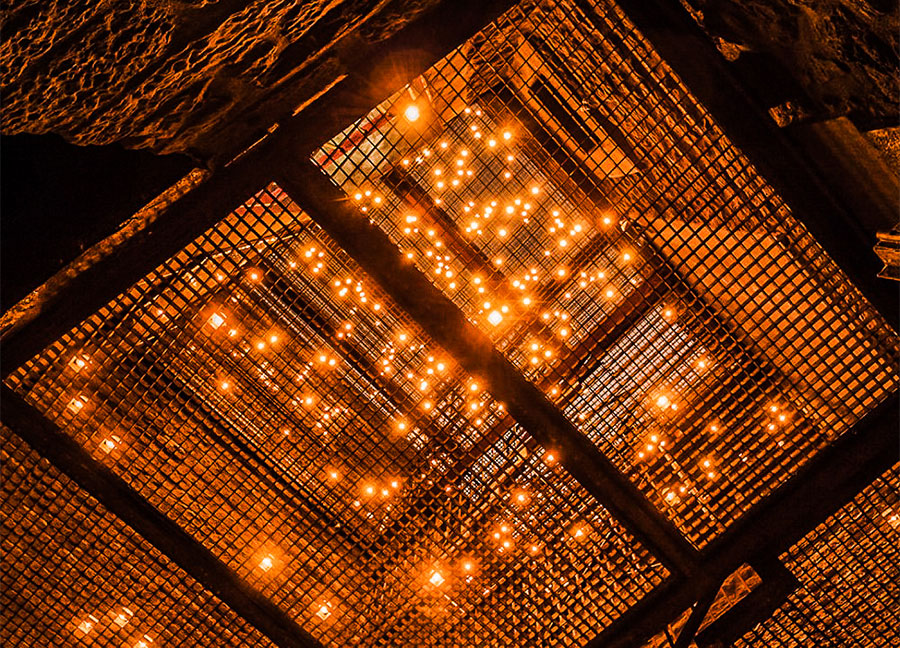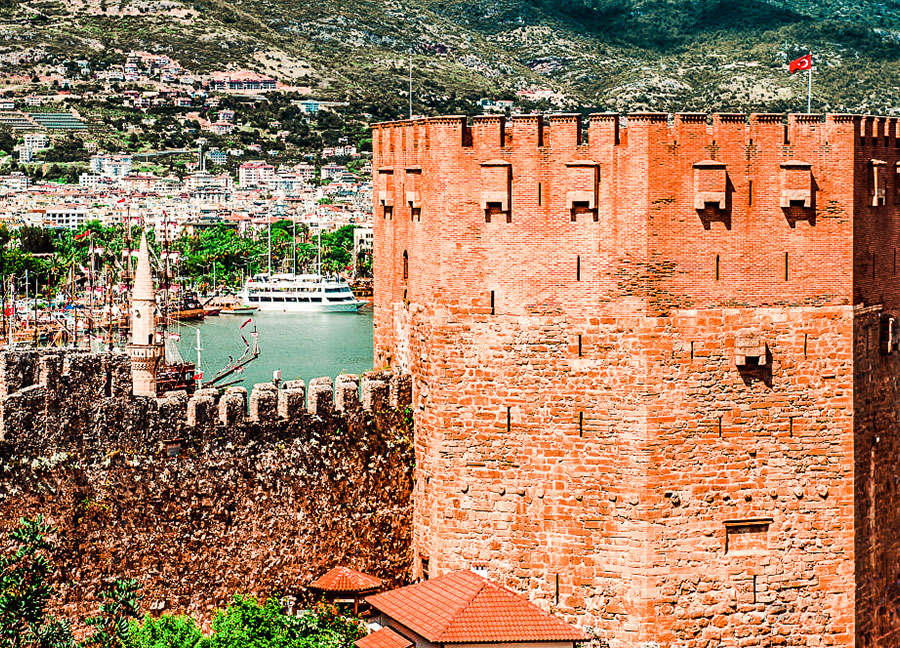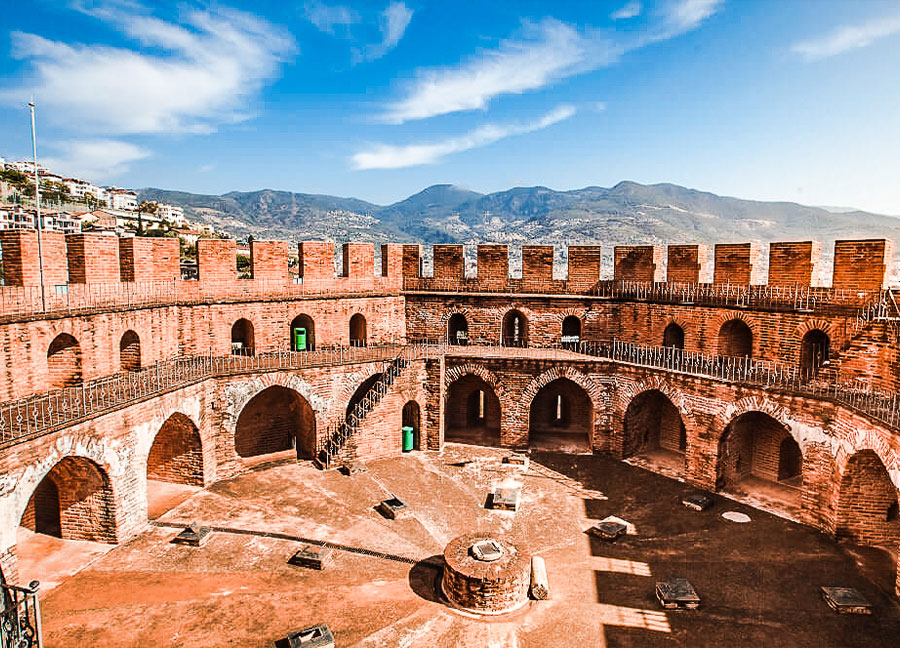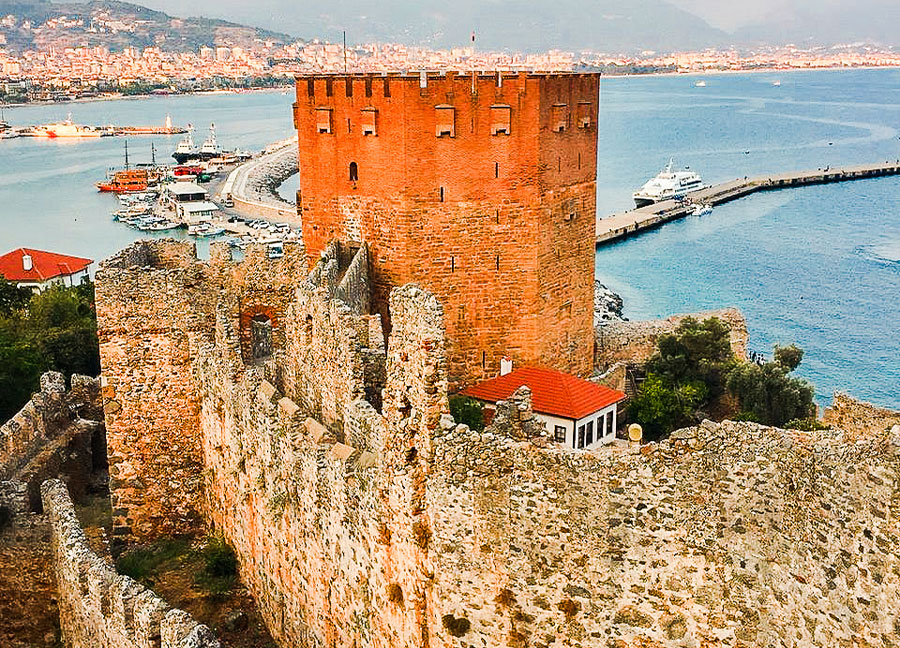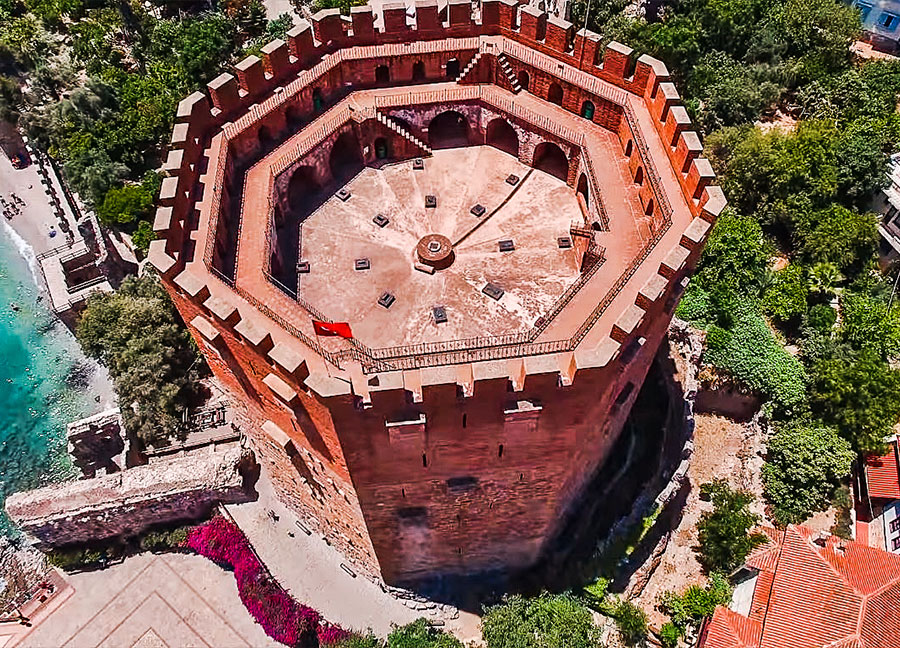Kızılkule, which is among the essential structures reflecting the architecture of the Seljuk Period, was built by the Seljuk Emperor Alaeddin Keykubad I, an architect named Ebu Ali from Aleppo (Syria) in 1226, to keep the Alanya Harbor under control.
The magnificent tower, which is the symbol of Alanya, is 29 meters in diameter and 33 meters high. Kızılkule, a design wonder, plan and architectural feature, took its name from the cut stones on the upper and lower parts. There is an elevation difference of 2 meters between the east and west facades due to the base location. It was built in an octagonal plan and has five floors. Although it has a simple exterior, it amazes those who see it with its complex interior structure. All floors, each of which has a different plan, have defensive observation battlements and open-fronted trenches. The section rising from the middle of the ground floor to the fifth floor has served as a water cistern and is the backbone of the tower.
The Kızılkule was repaired in 1951-1953, and in 1979 the entrance and first floor of the tower was organized as the Ethnography Museum. In the museum, local artifacts such as carpets, rugs, weaving loom, clothes, kitchen utensils, weapons, weighing instruments, lighting tools, weaving looms and tents reflect the Yörük culture of the Taurus are exhibited, revealing the cultural values and lifestyle of Alanya.


